Gymnastics bar moves are considered some of the hardest in the whole of the sport due to the immense strength and flexibility needed to perform them well. This guide focuses on bar moves performed by female gymnasts on Uneven bars, though there are some cross-overs with the male horizontal bar. The other set of bars that male gymnasts use, the Parallel Bars, is not covered in this article.
All skills are listed in alphabetical order.
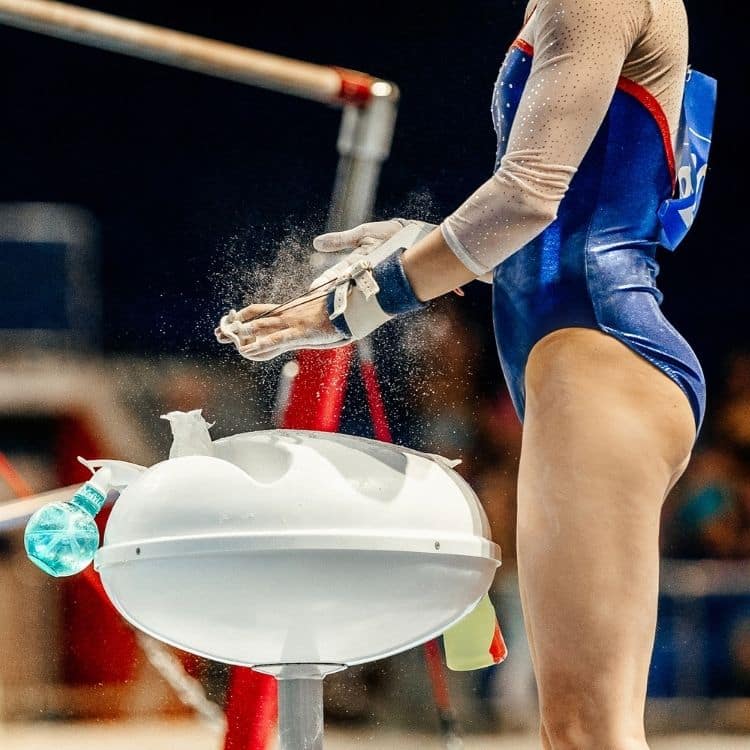
Backward Giant Circle to a 180 Degree Twist
This move involves a gymnast performing a giant circle backward on the bar and then twisting 180 degrees in the air before regrasping the bar. It requires excellent timing and body control.
Backwards Hip Circle
In the backwards hip circle, the gymnast swings backward around the bar, maintaining a tight body position. This move helps develop momentum and rhythm.
Backwards Sole Circle
This skill involves the gymnast circling backward around the bar with their soles making contact with the bar. It’s a foundational skill for more complex movements.
Bhardwaj (Full-twisting Pak Salto)
Named after Indian gymnast Mohini Bhardwaj, this advanced move, first performed in 2004, is a Pak Salto with a full twist. It’s known for its complexity and elegance.
Blind Change
The Blind Change is a turning skill where the gymnast rotates 180 degrees while in a handstand on the bar. It’s a difficult skill but once mastered will allow gymnasts to switch the direction of their swing and add a wider range of skills to their routine.
Cast
A fundamental skill, the cast involves the gymnast moving from a front support position on the bar into a handstand. It’s essential for transitioning into higher-level skills.
Cast to Handstand
This skill is an extension of the basic cast, where the gymnast casts up into a handstand position. It requires strength and control.
Cast to Horizontal
In the Cast to Horizontal, the gymnast casts up and levels out in a position parallel to the ground, requiring core strength and control. It’s easier than Cast to Handstand as the gymnast is only extending into a level position rather than completely upside down.
Church (Piked Tkatchev)
The Church, a variation of the Tkatchev, involves a piked somersault backward over the bar. It’s named after American gymnast Ashton Locklear.
Clear Hip Circle
This skill involves the gymnast circling around the bar while maintaining a clear hip position, crucial for developing fluidity and rhythm.
Comaneci Salto
Named after the legendary Nadia Comaneci, this move involves a frontward salto over the high bar from a toe-on start. It’s historic for its innovation and difficulty.
Deltchev (Straddled Tkatchev)
The Deltchev, invented by Bulgarian gymnast Stoyan Deltchev, involves a straddle flip over the bar from a backward giant. It’s noted for its dynamic execution.
Endo with Half Turn
This move is a backward giant around the bar into a straddle position with a half turn at the top of the swing, requiring precise body control and grip changes.
Front Giant
The Front Giant involves a forward giant swing, where the gymnast maintains a handstand position while circling the bar. It’s key for developing momentum.
Geinger (Reverse Hecht)
Named after German gymnast Eberhard Gienger, this move is a backward salto with a half twist over the bar, known for its aerial dynamics.
Giant
The Giant is a fundamental skill where the gymnast performs a full 360-degree rotation around the bar in a handstand position, essential for building momentum.
Hindorff (Straddled Tkatchev to High Bar)
This advanced move, named after East German gymnast Silvia Hindorff, involves a straddled flip to regrasp the high bar. It’s known for its high difficulty level.
Jaeger (Front Flip Catch)
The Jaeger, a front flip catch over the bar, was popularized by German gymnast Bernd Jäger. It’s a visually stunning move requiring precise timing.
Khorkina (Stalder to Blind with Change of Grip)
Named after Russian gymnast Svetlana Khorkina, this complex move involves a stalder into a blind change with a grip switch, showcasing exceptional flexibility and skill.
Leg Cut
In this basic move, the gymnast swings one leg over the bar, cutting it to switch positions. It’s foundational for more complex routines.
Long Hang Kip
The Long Hang Kip involves the gymnast moving from a long hang position into a front support on the bar, requiring core strength and precise timing.
Mill Circle
This skill involves the gymnast circling the bar with their legs in a straddle position, rotating around the bar. It helps develop coordination and strength.
Ono (Full Pirouette in El-Grip)
Named after Japanese gymnast Takashi Ono, this move involves a full pirouette in an el-grip on the high bar. It requires advanced grip strength and control.
Pak Salto (Backwards Flip from High to Low Bar)
The Pak Salto, named after North Korean gymnast Pak Gyong Sil, is a backwards flip from the high bar to the low bar, known for its smooth execution.
Piked Stalder
This move involves a piked body position while performing a stalder circle. It requires flexibility and precise body control.
Pull Over
A fundamental skill for beginners, the Pull Over involves the gymnast pulling over the bar from a hang to a front support position.
Ray (Toe-on Tkatchev)
Named after American gymnast Elise Ray, this skill involves a toe-on to a Tkatchev, a dynamic and visually impressive move.
Ricna (Stalder Tkatchev)
The Ricna, a variation of the Tkatchev, involves performing a stalder circle and then a backward flip over the bar. It requires significant strength and precision.
Salto Dismount
A common dismount, the Salto Dismount involves performing a salto (flip) off the bar, landing on the mat. It can be executed in various forms.
Seitz (Toe-on Tkatchev with Half Turn)
Named after German gymnast Elisabeth Seitz, this complex skill involves a toe-on to a Tkatchev with a half turn, known for its difficulty and originality.
Shaposhnikova (Free Hip Circle with Flight to High Bar)
Named after Soviet gymnast Natalia Shaposhnikova, this move is a free hip circle with a flight transition to the high bar, showcasing agility and precision.
Shushunova (Stalder Forward to Handstand)
Named after Soviet gymnast Elena Shushunova, this skill involves a stalder forward into a handstand, requiring flexibility and control.
Single Leg Basket Swing
In this move, the gymnast swings one leg in a basket swing under the bar, a fundamental skill for rhythm and timing development.
Stalder Circle
The Stalder Circle involves the gymnast performing a circle around the bar in a stalder position, requiring flexibility and precision.
Straddle Back
This skill involves a straddle movement to move back over the bar, essential for transitioning in routines.
Tkatchev (Reverse Hecht)
The Tkatchev, a classic move in gymnastics, involves a reverse hecht over the bar. It’s a staple in high-level routines for its dynamic execution.
Toe Hecht
The Toe Hecht is a toe-on release move where the gymnast launches over the bar, requiring precise timing and grip strength.
Tucked Jaeger
A variation of the Jaeger, this move involves a tucked front flip to regrasp the bar, showcasing aerial acrobatics.
Underswing Dismount
The Underswing Dismount involves swinging under the bar and releasing into a dismount, a fundamental skill for beginners.
Van Leeuwen (Maloney with Half Turn)
Named after Dutch gymnast Laura van Leeuwen, this move is a Maloney with a half turn to regrasp the high bar, requiring dynamic strength and precision.
Final Thoughts
Gymnastics bar moves are among the most difficult across all of the disciplines, however, with training and maybe some home training, bars can be enjoyed by gymnasts of all ages and abilities.
Sources:
- How Much Do Gymnasts Make?
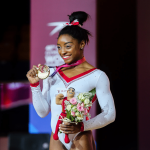 It is very tough to make money as a gymnast. If you are fortunate enough to earn the equivalent of a full-time wage you will… Read more: How Much Do Gymnasts Make?
It is very tough to make money as a gymnast. If you are fortunate enough to earn the equivalent of a full-time wage you will… Read more: How Much Do Gymnasts Make? - What Makes a Good Gymnast? (8 Vital Qualities)
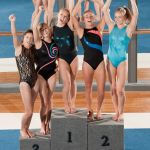 What makes a good gymnast? Strength, power and flexibility are commonly mentioned qualities. But there are lots of gymnasts that have the right physical qualities… Read more: What Makes a Good Gymnast? (8 Vital Qualities)
What makes a good gymnast? Strength, power and flexibility are commonly mentioned qualities. But there are lots of gymnasts that have the right physical qualities… Read more: What Makes a Good Gymnast? (8 Vital Qualities) - 41 Gymnastics Quotes (That Actually Work)
 Looking for some gymnastics quotes to inspiration your training? Check out our collection of the best gymnastics quotes that will ignite your passion for the… Read more: 41 Gymnastics Quotes (That Actually Work)
Looking for some gymnastics quotes to inspiration your training? Check out our collection of the best gymnastics quotes that will ignite your passion for the… Read more: 41 Gymnastics Quotes (That Actually Work) - 41 Gymnastics Bar Moves (explained)
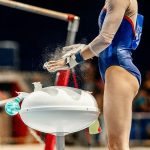 Gymnastics bar moves are considered some of the hardest in the whole of the sport due to the immense strength and flexibility needed to perform… Read more: 41 Gymnastics Bar Moves (explained)
Gymnastics bar moves are considered some of the hardest in the whole of the sport due to the immense strength and flexibility needed to perform… Read more: 41 Gymnastics Bar Moves (explained) - The Laser Balance Beam: Revolutionizing Gymnastics Training
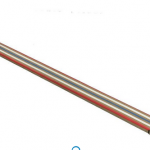 Gymnastics continually evolves with innovative and helpful training equipment. Among these advancements, the Gymnastics Laser Beam by Tumbl Trak stands out, redefining the way gymnasts… Read more: The Laser Balance Beam: Revolutionizing Gymnastics Training
Gymnastics continually evolves with innovative and helpful training equipment. Among these advancements, the Gymnastics Laser Beam by Tumbl Trak stands out, redefining the way gymnasts… Read more: The Laser Balance Beam: Revolutionizing Gymnastics Training - The Best Gymnastics Beam For Home (Top Picks)
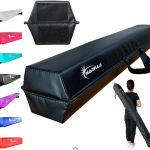 One essential piece of equipment for any gymnast at home is the balance beam, which can help improve balance, coordination, and flexibility. However, with so… Read more: The Best Gymnastics Beam For Home (Top Picks)
One essential piece of equipment for any gymnast at home is the balance beam, which can help improve balance, coordination, and flexibility. However, with so… Read more: The Best Gymnastics Beam For Home (Top Picks)
